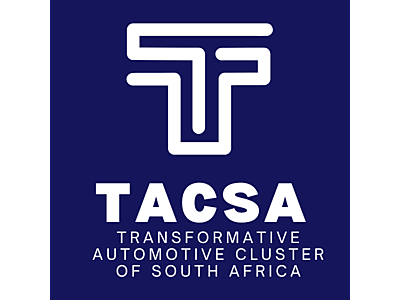How OEMs Can Strengthen the Transformative Automotive Cluster in South Africa’s Townships and Rural Areas
Posted by Floyd Baloyi (Community Manager)  on
11 June 2025, 11:45
SAST
on
11 June 2025, 11:45
SAST
As South Africa’s automotive landscape shifts toward electrification and localisation, Original Equipment Manufacturers (OEMs) have a crucial role to play—not just in production and sales, but in driving equitable development. One of the most promising opportunities for impact lies in supporting the Transformative Automotive Cluster South Africa (TACSA), a grassroots initiative focused on uplifting informal mechanics and modernising workshops across townships and rural communities.
.jpg)
Why OEMs Must Engage Beyond Traditional Dealerships
The traditional automotive value chain has historically excluded township-based and rural mechanics, leaving a massive service and employment gap. Yet these areas represent:
· Over 40% of the informal automotive aftermarket
· A growing base of vehicle ownership
· Untapped potential for skills development, aftermarket sales, and brand trust
By supporting TACSA and related township initiatives, OEMs can improve their local footprint while enabling structural transformation.
5 Strategic Ways OEMs Can Support TACSA
1. Skills Development & Technical Training
OEMs can:
· Deploy mobile training units or partner with TVET colleges
· Offer certified technician training for ICE, EV, and hybrid systems
· Help develop township-based service academies linked to OEM technologies
Impact: Builds technician pipelines and boosts service network reach.
2. Diagnostic Equipment & Technology Access
OEMs can:
· Provide access to branded diagnostic tools and software
· Offer subsidised or open-license platforms for rural workshops
· Share OEM repair protocols through digital platforms like HaynesPro
Impact: Increases repair accuracy and vehicle longevity across regions.
3. Inclusion in Parts & Aftermarket Distribution
OEMs can:
· Enable SMMEs and township workshops to access genuine parts
· Create township-based logistics micro-hubs for parts distribution
· Offer bulk purchase discounts for rural service centers
Impact: Drives local entrepreneurship and brand-aligned parts usage.
4. EV Infrastructure & Readiness
With SA moving towards EV adoption, OEMs can:
· Deploy small-scale EV charging stations in high-density townships
· Train rural technicians on EV servicing and safety protocols
· Support battery reuse/recycling pilots linked to informal sectors
Impact: Ensures no region is left behind in the electric future.
5. Collaborative Public-Private Partnerships
OEMs should:
· Work with government, NGOs, and industry bodies (like NAAMSA)
· Co-fund TACSA’s expansion under the GATE initiative
· Help standardise township workshops for quality, compliance, and branding
Impact: Builds trust, visibility, and long-term ecosystem benefits.
The Business Case for OEM Involvement
This is not just CSR—it is a growth strategy. Supporting township mechanics helps OEMs:
· Expand aftermarket revenue in underserved regions
· Build loyalty through visible, community-first branding
· Drive compliance with South Africa’s Automotive Masterplan 2030
Final Thoughts
South Africa’s future mobility ecosystem must be inclusive. OEMs have the capital, technical expertise, and brand equity to reshape township and rural economies from the ground up. Through meaningful engagement with initiatives like TACSA, they can help formalise the informal, electrify the underserved, and ensure sustainable, profitable growth for all.
Recommendation here
